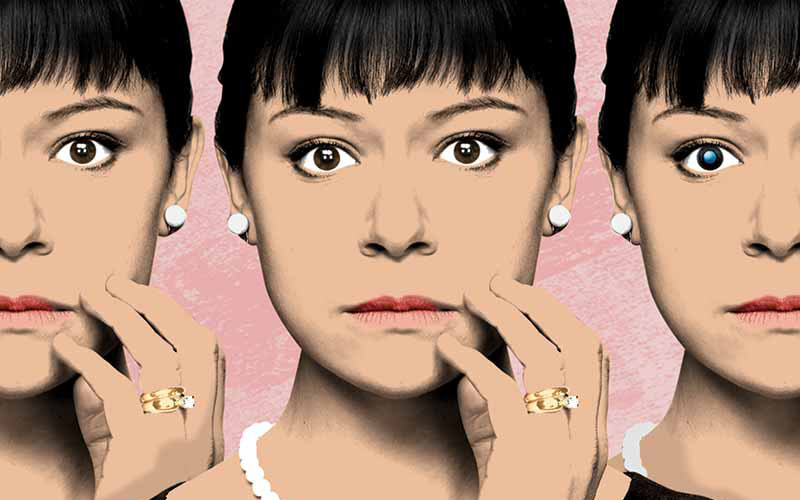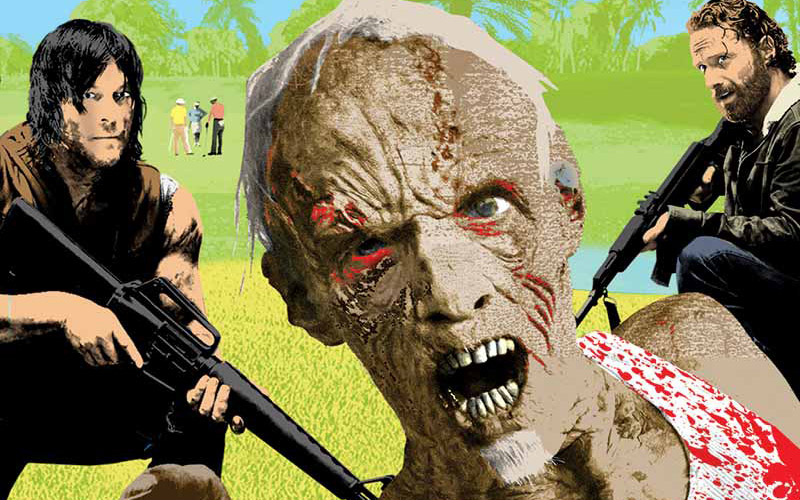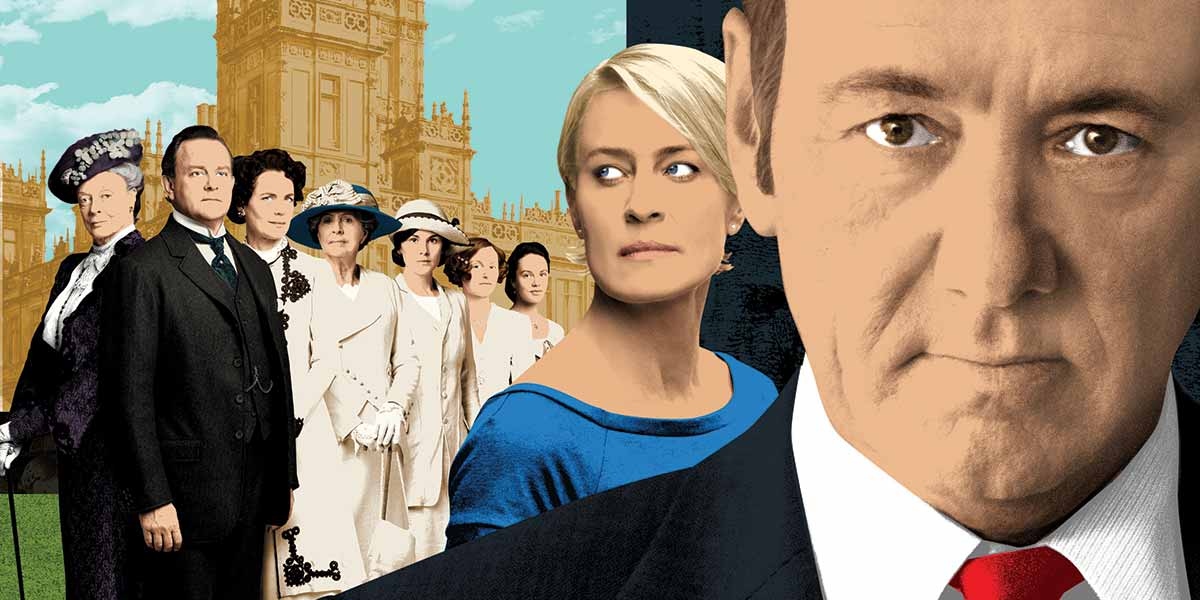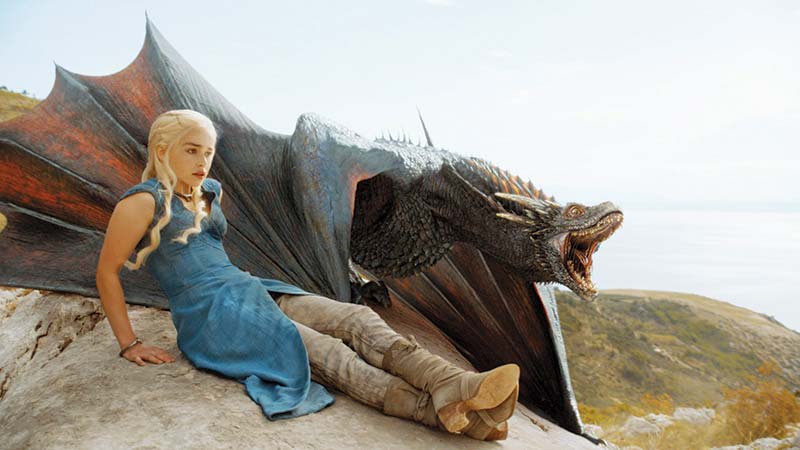In today’s “New Golden Age of Television,” we often have impossibly high standards for the shows we watch. We expect the plots to be compelling, and we expect the details to be right. A single wrong note can poison a show in a way that destroys our trust and causes us to abandon it for good. When NCIS aired a scene that fundamentally misrepresented computer hacking, for example, a furious viewer uploaded the cringe-inducing clip to YouTube and titled it “2 Idiots 1 Keyboard.” The clip has garnered more than 2 million views and inspired thousands of snark-filled comments. It’s harsh, sure. But if a show asks us to spend dozens— if not hundreds—of hours in its world, we deserve television that delivers on every level. That’s why we asked Denison professors and alumni to weigh in on some of today’s popular and most talked about shows that are linked to their areas of expertise. They shared with us the themes that these shows get right, the details they get wrong, and the larger human truths that the shows aptly explore.
“Downton Abbey”
Downton Abbey
Collecting and cataloguing the details that pop up on Downton Abbey is something of a cottage industry on the Internet. Viewers point out television antennas perched on roofs, yellow lines painted on roads (nonexistent a century ago), and popular songs being performed in an era before they’d been written.
But for Assistant Professor of History Hannah Weiss Muller, it is the physical appearance of certain characters that gives her pause. “In many historical dramas, the characters—particularly those who are not from the privileged classes— are too clean, too well-fed, and have skin and teeth that are far too perfect. The one show that gave me hope where historical grubbiness was concerned was Deadwood.”
Many experts are skeptical that the relationships between members of the household and staff—Lord Grantham and Bates, Lady Mary and Carson— would have been as close in real life as they are on the show, but Muller is more open to the idea. She notes that this is a world in which the wealthy relied on their servants to help them perform intimate tasks such as dressing and bathing, so it’s not completely unbelievable that such folks might have developed close relationships. “When I allow myself to enter the world being created on the show, a world centered around an aristocratic family that is quite conscientious about its broader social responsibilities, the close relationships work,” she says.
But what she finds most thrilling— and most accurate—is the show’s depiction of the tumult and motion of the early 20th century. “I love the sense of growing connectivity as the show progresses,” she says. “Trips to London become increasingly possible, characters are traveling abroad, and trains and cars are becoming progressively more important and present.” She also appreciates the darker, less obvious themes that emerge, such as the economic and social effects of World War I on the aristocracy.
Most of all, Muller loves the current- day conversations that occur as a result of shows like Downton. If students who have seen the drama come to her class with ideas about that period’s attitudes toward sexuality, class, and war, she says, it’s a great jumping-off point for deeper, more nuanced conversations.
Other period shows worth watching: Bleak House and Little Dorrit, says Muller. Both reveal “some of the seamier sides of life in 19th-century England,” while capturing key elements of those time periods.
The quest for accuracy: To get picture-perfect clothing for Downton characters, Emmy Award-winning costume designer Caroline McCall pores through books and magazines from the time and makes frequent visits to Cosprop, a London costume house with a museum of original clothes.
“Orphan Black”

Orphan Black
Critics have spilled gallons of ink praising the performance of the infinitely malleable Tatiana Maslany, who plays the roles of a dozen distinct “clones” in the scifi series Orphan Black. But nearly as admirable is the accuracy of the science that drives the show, says Jeff Thompson, a molecular geneticist and associate professor of biology at Denison.
Certainly, he admits, the show starts out on a foundation of fiction simply because sophisticated cloning techniques didn’t exist 30 years ago, when the show’s clones were purportedly born. “Cloning with various animal species, for example, has been happening for less than 20 years,” Thompson says. “It’s rarely been reached with primates, and as far as we know, no one has legitimately tried to clone a human embryo.”
But many of the other details ring true. “The general approach that the show is using of nuclear transfer—taking DNA from one cell and transferring it into an egg in another individual—that’s completely based in reality,” Thompson says. And “watermarks,” the unique sequence identifiers that help researchers distinguish the clones from one another, are also commonly used by real-life researchers, who tag everything from cloned strains of bacteria to cloned mice.
Thompson finds the most sophisticated part of the show not in the scientific language or approach, but in the enormous diversity of the clones themselves. Their personalities range from cold and calculating to warm and generous; individual clones identify as straight, as lesbian, and as transgender. “We know from cloning other species that the animals won’t come out looking identical, for example,” he says. “And behavior is very strongly shaped by our environment. We would expect that clones raised in different environments would develop different personalities and characteristics.”
In the end, says Thompson, Orphan Black illuminates how much more nuanced the nature vs. nurture debate should be. “The program does a great job showing that our complexity as individuals is partly genetic,” says Thompson, “but that our identity is also determined by all sorts of other stuff that’s so much harder to capture.”
The quest for accuracy: The show works closely with Cosima Herter, a doctoral student at the University of Minnesota, who studies the historical development of biotechnology in the 20th century. The character Cosima Niehaus is loosely based on Herter’s life.
“House of Cards”
House of Cards
In Frank Underwood’s Machiavellian political world, there are few ploys too underhanded to pursue in his quest for power. Misdirection? Check. Over-the-top threats? Check. Murder? Double-check.
While Michael Brady, an assistant professor of political science, admits that there’s plenty not to like about Washington-style politics, he’s quick to insist that House of Cards unrealistically cranks up the drama’s political darkness. But some of the more mundane details, like the less-than-inspiring lives of the 20-somethings who do the grinding work of reporting and bill-writing in the nation’s capital, are exactly right.
Beneath the sheen of glamorous parties attended by the wealthy and powerful are the young college and law-school grads working long hours on often-tedious projects, trying to find their places in the city. For all her high aspirations, for example, reporter Zoe Barnes lives in a grimy walk-up apartment, and she churns out stories under bleak fluorescent lighting in the Washington Herald offices. And those on Underwood’s staff have an utterly relentless workload. “To see Frank task his staffers to write the education bill— staffers who are largely recent grads— and watch them pull all-nighters? To have a bill get shaped not by politicians, but by their staff and special interests?” Brady says. “That’s realistic.”
Those pitch-perfect moments can sometimes throw other, less realistic moments—in which the plot is driven forward by events that are technically possible, but utterly improbable— into sharp relief. In the second season, for example, Underwood orchestrates a complicated, multipart maneuver to push some important legislation through the Senate and prevent a government shutdown. As depicted in these machinations, Underwood commandeers the floor, and senators are being dragged into the chamber against their will. “These actions could happen,” says Brady. “But they emphasize the improbable in a way that makes it easy to walk away with the wrong impression about how government typically works.”
And Brady says it’s often hard to get past some of the largest assumptions that drive the show. “In some ways, Frank Underwood is portrayed as the only person who really understands the game going on,” he says. “He’s always the smartest guy in the room, and he runs the table with all of the enemies he chooses, creates, targets. They all unwittingly fall into his traps.”
Is all this enough to keep Brady away from his TV? Not a chance. “I’m hooked,” he admits. “It’s just great television.”
The quest for accuracy: To create a more authentic subplot about a Deep Web hacker in the second season of House of Cards, the show hired Internet activist Gregg Housh to spend six months on the Baltimore set.
“The Walking Dead”

The Walking Dead
You don’t have to believe in zombies to understand that there’s a lot of truth at the heart of this post-apocalyptic horror series. The Walking Dead may focus most of its time on day-to-day survival tactics of the nonzombified set, but it provides sharp and often accurate commentary on pandemics—and our response to them.
Assistant Professor of Biology Clare Jen, for example, says all those guns and grenades that characters tote around do more than just blast away the baddies. She compares the setting to the 2003 SARS outbreak, when people in high-risk areas took very specific and visible steps to stay safe. “People wore face masks to protect themselves from ‘risky bodies’ [like SARS carriers] and to show that they were responsible,” she says. “The face mask was a signifier of both of those things.” Similarly, she says, The Walking Dead characters show their own self-sufficiency and responsibility through weaponry, whether that’s Rick’s Colt Python revolver or Michonne’s katana sword.
And that “just when you thought things couldn’t get worse” flu that spread through the prison in season four? There are plenty of real-life corollaries, says Professor of Biology Tom Schultz. In 2010, for example, Haiti’s devastating earthquake turned even more deadly when U.N. troops inadvertently introduced cholera, killing thousands of residents. “When there’s no infrastructure [as is the case in The Walking Dead], otherwise small problems can become really big problems,” says Schultz.
Schultz believes that The Walking Dead has hit a nerve with audiences on a larger scale because it indirectly addresses some of our culture’s most deeply held fears. Just as the 1956 smash Invasion of the Body Snatchers tapped into our country’s Cold War anxiety and the idea that we never know whom to trust, The Walking Dead illuminates our fears of deadly diseases that can be contracted with a single bite—whether from a zombie or a mosquito. “There’s so much news about the West Nile virus, for example, and other terrible diseases that are transmitted so much more easily and quickly because of globalization,” says Schultz. It’s not just a tension we see on the show, in other words. It’s one that people actually experience, in different ways, in their own lives.
The quest for accuracy: To track down the very best zombies, Walking Dead special-effects consulting producer Greg Nicotero, called “a Picasso of the horror genre,” auditioned more than 150 extras. “As people die and start to decompose, we see the shape of the skull,” he told Hollywood Reporter. “We handpicked performers who had really big eyes, long, thin faces, and even longer necks.”
Law & Order
After a relatively inauspicious premiere in 1990, Law & Order became something of an empire, running for 20 seasons and spawning four spinoff shows, including one that’s still in production, Law & Order: Special Victims Unit. But for all its success—including praise for its often-nuanced handling of ripped-from-the-headlines cases—it’s got plenty of problems, says Richard Dinkins ’74, a judge for the Tennessee Court of Appeals who spent more than a quarter-century as a trial lawyer before heading to the bench.
For one thing, says Dinkins, all those edge-of-your-seat “Objection, Your Honor!” courtroom scenes aren’t nearly as captivating in real life. “Those [procedures] aren’t dramatic,” Dinkins says. “The rules of hearsay, evidence for relevance, and the qualifications of a witness to testify are kind of bookish. It’s boring, unless you’re a lawyer who’s been trained to love those things.”
And Jack McCoy’s uncanny ability to turn the trajectory of a case by coaxing out a timely confession? Unlikely. “I’ve never heard of someone making a confession on the witness stand,” Dinkins says. “Lawyers don’t pull rabbits out of hats.”
That said, shows like Law & Order (and its many predecessors) have profoundly influenced the way our society understands the practice of law, says Dinkins. Many jurors assume the cases they sit on will have all the dramatic elements of a television show, whether that means flawless opening and closing statements, unimpeachable DNA evidence, or riveting pacing. “When I began practicing in 1977, I had a standard question I asked jury members about whether they thought that lawyers were Perry Mason,” he says. “If they said yes, I knew I had to educate them about what actually happens. It’s just not like they show it on TV.”
Other legal dramas worth watching: Dinkins recommends kicking your TV habit in favor of two great movies: A Time to Kill, a story about a black father who kills the white rapists of his young daughter; and Philadelphia, which addresses HIV/ AIDS and homophobia. These movies have plenty of drama, tackle important issues, and place the cases within a larger cultural context.
The quest for accuracy: It may not be perfect, but it’s definitely the best according to a 2011 survey of professors done by the law-school magazine, The National Jurist. In that survey, Law & Order ranked No. 1 among 25 TV shows portraying the law world. It’s praised for its meticulous, well-researched plots and its presentation of the delicate relationships among prosecutors, police, and politicians.
Good television doesn’t have to be real. But it must be honest.
Most prime-time television shows seem to have few obligations to the truth. But if the shows want to hook viewers, says Associate Professor of English Margot Singer, they’ve got to have the deepest possible honesty embedded within them.
Whether or not a storyline could actually happen, we want to feel that we’re in competent, trustworthy hands, Singer says. Once a writer or a television show has dropped us into a specific world—whether it’s a contemporary small-town parks department as in Parks and Recreation, or the continents of Westeros and Essos as in Game of Thrones—it must comply with the rules it has set. “Writer John Gardner says that fiction is ‘a vivid and continuous dream.’ You don’t want to interfere with that,” says Singer.
That internal logic may demand that every detail of a show is just right: witness the painstaking work that Mad Men staffers do to get the clothing, the technology, and the pop culture references perfect for the time.
For other shows, such verisimilitude isn’t quite as critical, as long as it speaks to larger truths. We may let those cigarette- toting cockroaches slide in Orange is the New Black, but we want the conversations between best pals Taystee and Poussey to be authentic to their characters, not simply dialogue that moves a plot forward. “Fiction has to have great truth—emotional truth, human truth—to be powerful,” says Singer.


